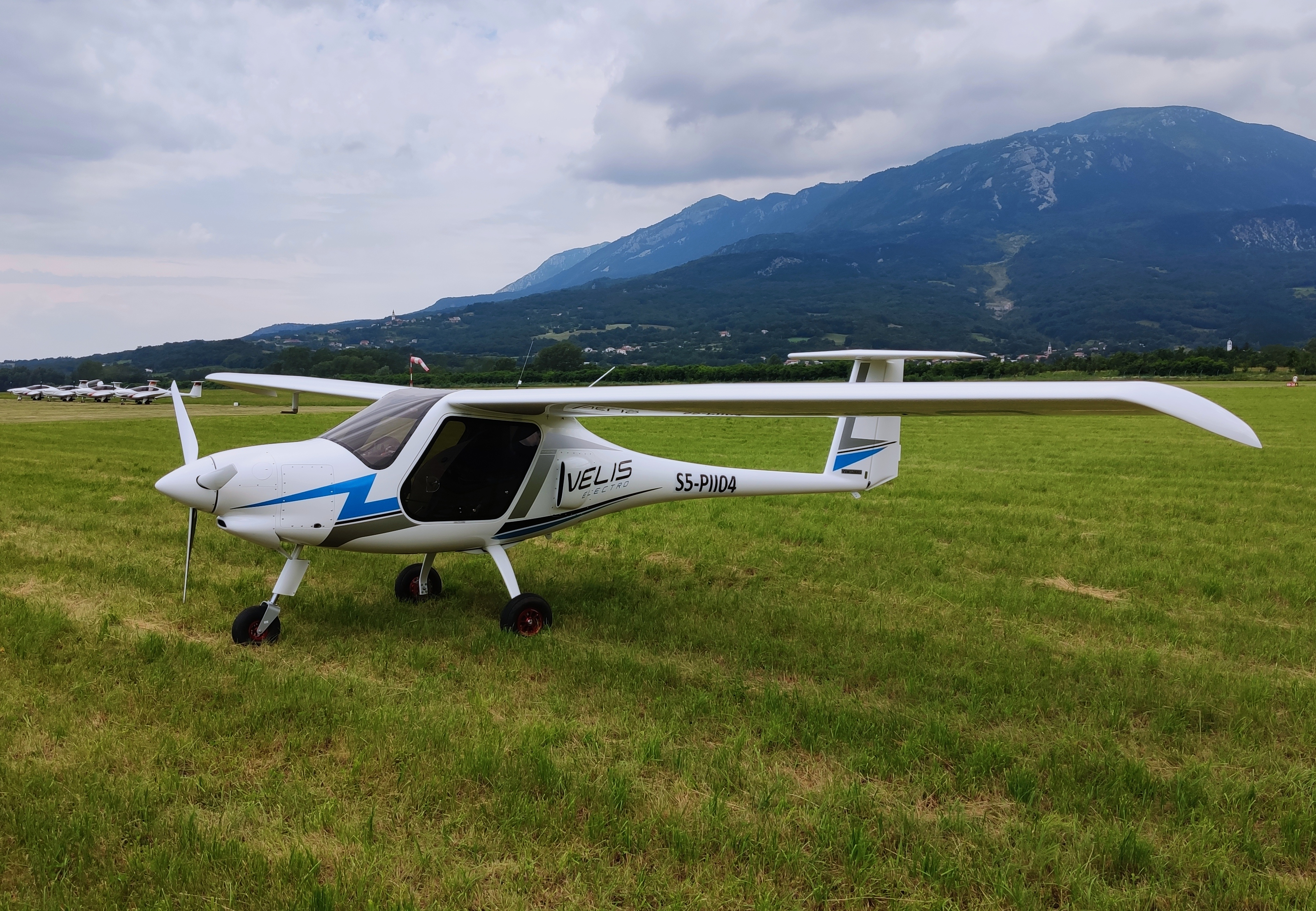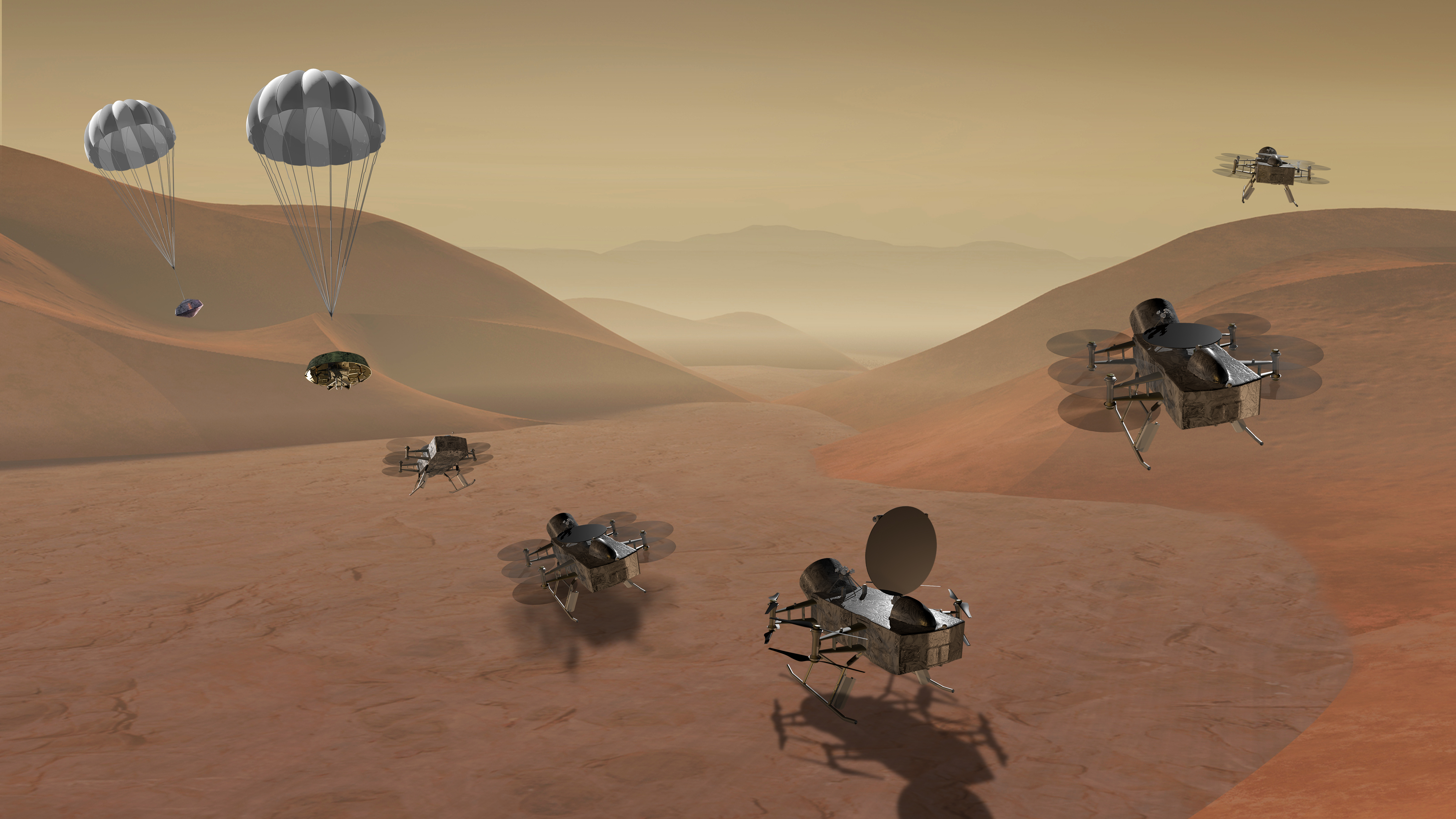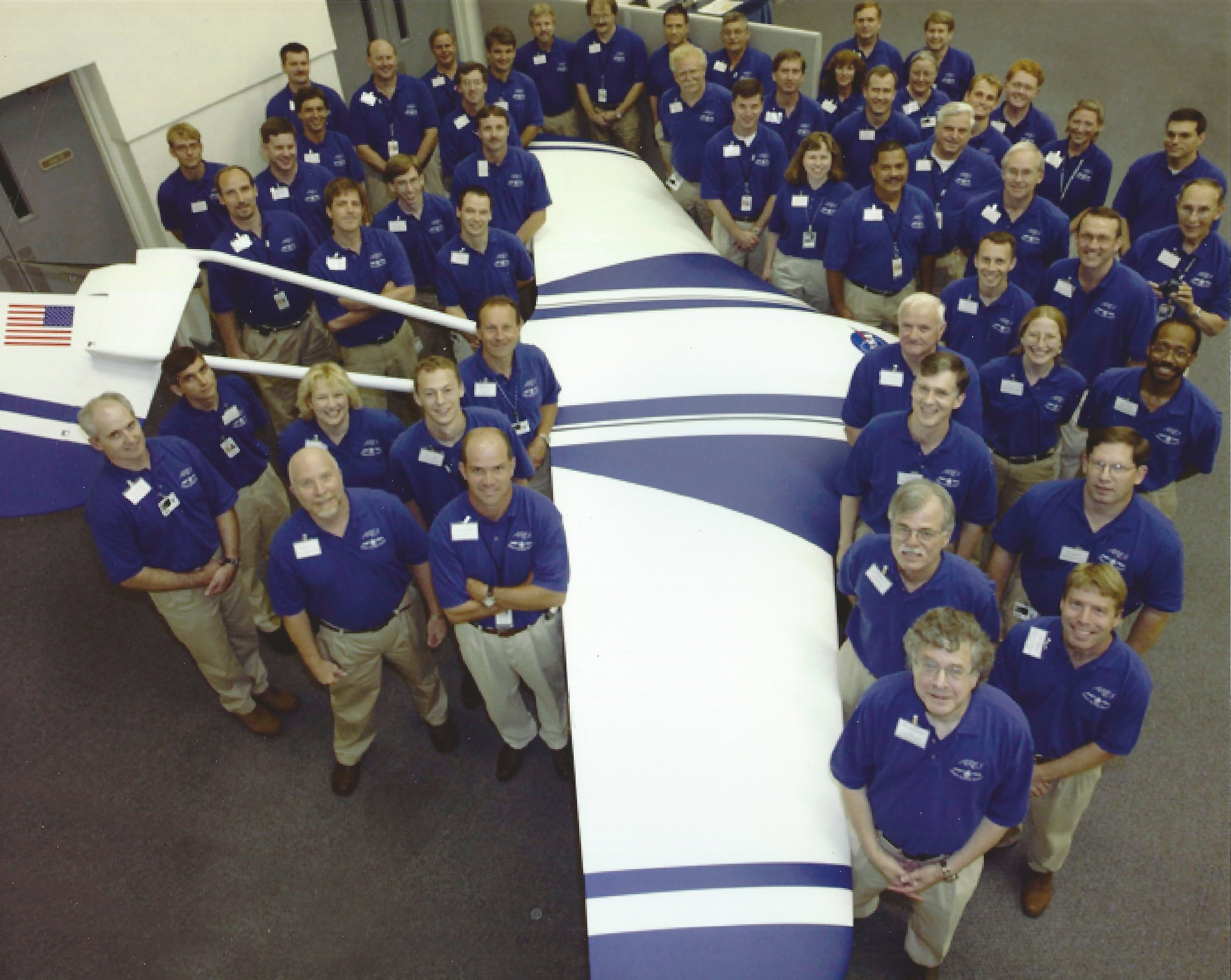|
Sky-Sailor
The Sky-Sailor is a concept for a robotic aircraft with embedded solar cells on its wings, conceived in 2004 by the Swiss Federal Institute of Technology in Zurich. It is hoped it would be able to study the Martian surface. Sky-Sailor would be an autonomous, solar-powered Mars aircraft that would fly for one Martian day of 24 hours and scan features on the surface of Mars. If this project is funded and developed, it would be able to take detailed pictures of Mars, especially in places where wheeled rovers can not go. Concept and design The challenge for the developers was to make a very light weight model, which was accomplished. After that, an autopilot had to be installed so a non-stop autonomous flight for 24 hours could be achieved. All this was tested with a scale model in a wind tunnel. Two major challenges for small autonomous aircraft for Mars are to keep the weight down, such as batteries and electronics, and designing the autonomous control systems for directing the fl ... [...More Info...] [...Related Items...] OR: [Wikipedia] [Google] [Baidu] |
Mars Aircraft
A Mars aircraft is a vehicle capable of sustaining powered flight in the atmosphere of Mars. So far, the Mars helicopter ''Ingenuity'' is the only aircraft ever to fly on Mars, completing 61 successful flights covering in 1 hour, 50 minutes and 54 seconds of flight time. It made the first powered flight on 19 April 2021, taking off from the surface. Previously, the experimental aircraft, NASA Mini-Sniffer, was considered for possible missions to fly in and study Mars' atmosphere, but that idea was abandoned. Aircraft may provide on site measurements of the atmosphere of Mars, as well as additional observations over extended areas. A long-term goal is to develop piloted Mars aircraft. Compared to Earth, the air on Mars is much thinner at the surface, with pressure less than 1% of Earth's at sea level, requiring a more efficient method to achieve lift. Offsetting that disadvantage, Mars air, mostly consisting of carbon dioxide (), is denser per unit of volume than Earth air, a ... [...More Info...] [...Related Items...] OR: [Wikipedia] [Google] [Baidu] |
Missions To Mars
This is a list of the 50 spacecraft missions (including unsuccessful ones) relating to the planet Mars, such as orbiters and rovers. Missions ;Mission Type Legend: Mars landing locations There are a number of derelict orbiters around Mars whose location is not known precisely; there is a proposal to search for small moons, dust rings, and old orbiters with the Optical Navigation Camera on the ''Mars Reconnaissance Orbiter''. There should be 8 derelict Mars orbiters barring unforeseen events if they have not decayed as of 2016. One example is Mariner 9, which entered Mars orbit in 1971 and is expected to remain in orbit until approximately 2022, when the spacecraft is projected to enter the Martian atmosphere and either burn up or crash into the planet's surface. The Viking 1 orbiter is predicted not to decay until at least 2019. One orbiter that is confirmed to have undergone Mars atmospheric entry is Mars Climate Orbiter. Timeline Future missions In development ... [...More Info...] [...Related Items...] OR: [Wikipedia] [Google] [Baidu] |
Mars Helicopter Ingenuity
''Ingenuity,'' nicknamed ''Ginny,'' is a small robotic helicopter operating on Mars as part of NASA's Mars 2020 mission along with the ''Perseverance'' rover, which landed with ''Ingenuity'' attached to its underside on February 18, 2021. The helicopter was deployed to the surface on April 3, 2021,"NASA's Mars Helicopter: Small, Autonomous Rotorcraft To Fly On Red Planet" , Shubham Sharma, ''International Business Times'', 14 May 2018 and on April 19 successfully made the first powered controlled extraterrestrial flight by an aircraft, taking off vertically, hovering and landing for a flight duration of 39.1 s ... [...More Info...] [...Related Items...] OR: [Wikipedia] [Google] [Baidu] |
NASA Mini-Sniffer
The NASA Mini-Sniffers were a series of unmanned aerial vehicles designed to sample the air at high altitude to support various scientific studies. History In the early 1970s, NASA engineer Dale Reed was investigating methods for sampling the atmosphere at very high altitudes, up to 21 kilometers (70,000 feet). NASA's studies into supersonic transport jets had led to questions about their possible impact on the upper atmosphere, and Reed designed a series of "Mini-Sniffer" drones to take air samples at high altitudes. NASA also considered them for planetary atmospheric sampling flights over Mars. Three Mini-Sniffers were built by NASA Dryden Flight Research Center and were flown from 1975 through 1982. The aircraft Mini-Sniffer I The initial "Mini-Sniffer I" had a wingspan of 5.5 meters (18 feet), tailfins on the wingtips, and canard (aeronautics), canards on the nose. It used a gasoline-powered piston engine and performed a dozen low-altitude flights to validate the design. Min ... [...More Info...] [...Related Items...] OR: [Wikipedia] [Google] [Baidu] |
Solar-powered Aircraft
An electric aircraft is an aircraft powered by electricity. Electric aircraft are seen as a way to reduce the environmental effects of aviation, providing zero emissions and quieter flights. Electricity may be supplied by a variety of methods, the most common being batteries. Most have electric motors driving propellers or turbines. Crewed flights in an electrically powered airship go back to the 19th century, and to 1917 for a tethered helicopter. Electrically powered model aircraft have been flown at least since the 1970s, preceding the small unmanned aerial vehicles (UAV) or drones used today. Small UAS could be used for parcel deliveries, and larger ones for long-endurance applications: aerial imagery, surveillance, telecommunications. The first crewed free flight by an electrically powered aeroplane, the MB-E1, was made in 1973, and most crewed electric aircraft today are still only experimental prototypes. Between 2015 and 2016, Solar Impulse 2 completed a circu ... [...More Info...] [...Related Items...] OR: [Wikipedia] [Google] [Baidu] |
Proposed Space Probes
Proposal(s) or The Proposal may refer to: * Proposal (business) * Research proposal * Proposal (marriage) * Proposition, a proposal in logic and philosophy Arts, entertainment, and media * ''The Proposal'' (album) Films * ''The Proposal'' (1957 film), an Australian television play based on Chekhov's 1890 play * ''The Proposal'' (2001 film), starring Nick Moran, Jennifer Esposito, and Stephen Lang * ''The Proposal'' (2009 film), starring Sandra Bullock and Ryan Reynolds * ''The Proposal'' (2022 film), starring Joe Joseph and Amara Raja * " La propuesta" ("The Proposal"), a short story in the 2014 Argentina anthology film ''Wild Tales'' Literature * ''Proposals (play)'', a 1997 play by Neil Simon * ''The Proposal'' (novel), 1999 and 35th book in the ''Animorphs'' series by K.A. Applegate * ''The Proposal'', alternative title of Chekhov's 1890 play ''A Marriage Proposal'' Television * ''The Proposal'' (American TV series), a 2018 reality dating series * The Proposal (Aust ... [...More Info...] [...Related Items...] OR: [Wikipedia] [Google] [Baidu] |
Industrial Design
Industrial design is a process of design applied to physical Product (business), products that are to be manufactured by mass production. It is the creative act of determining and defining a product's form and features, which takes place in advance of the manufacture or production of the product. It consists purely of repeated, often automated, replication, while craft-based design is a process or approach in which the form of the product is determined by the product's creator largely concurrent with the act of its production. All manufactured products are the result of a design process, but the nature of this process can vary. It can be conducted by an individual or a team, and such a team could include people with varied expertise (e.g. designers, engineers, business experts, etc.). It can emphasize intuitive creativity or calculated Evidence-based design, scientific decision-making, and often emphasizes a mix of both. It can be influenced by factors as varied as Raw material, ... [...More Info...] [...Related Items...] OR: [Wikipedia] [Google] [Baidu] |
Dragonfly (Titan Space Probe)
''Dragonfly'' is a planned NASA mission to send a robotic rotorcraft to the surface of Titan, the largest moon of Saturn. It is planned to be launched in July 2028 and arrive in 2034. It would be the first aircraft on Titan and is intended to make the first powered and fully controlled atmospheric flight on any moon, with the intention of studying prebiotic chemistry and extraterrestrial habitability. It would then use its vertical takeoffs and landings (VTOL) capability to move between exploration sites.Dragonfly: Exploring Titan's Prebiotic Organic Chemistry and Habitability E. P. Turtle, J. W. Barnes, M. G. Trainer, R. D. Lorenz, S. M. MacKenzie, K. E. Hibbard, D. Adams, P. Bedini, J. W. Langelaan, K. Zacny, and the Dragonfly Team ''Lunar and Planetary Scienc ... [...More Info...] [...Related Items...] OR: [Wikipedia] [Google] [Baidu] |
ETH Zurich
(colloquially) , former_name = eidgenössische polytechnische Schule , image = ETHZ.JPG , image_size = , established = , type = Public , budget = CHF 1.896 billion (2021) , rector = Günther Dissertori , president = Joël Mesot , academic_staff = 6,612 (including doctoral students, excluding 527 professors of all ranks, 34% female, 65% foreign nationals) (full-time equivalents 2021) , administrative_staff = 3,106 (40% female, 19% foreign nationals, full-time equivalents 2021) , students = 24,534 (headcount 2021, 33.3% female, 37% foreign nationals) , undergrad = 10,642 , postgrad = 8,299 , doctoral = 4,460 , other = 1,133 , address = Rämistrasse 101CH-8092 ZürichSwitzerland , city = Zürich , coor = , campus = Urban , language = German, English (Masters and upwards, sometimes Bachelor) , affiliations = CESAER, EUA, GlobalTech, IARU, IDEA League, UNITECH , website ethz.ch, colors = Black and White , logo = ETH Zürich Logo black.svg ETH Züric ... [...More Info...] [...Related Items...] OR: [Wikipedia] [Google] [Baidu] |
Helios Prototype
The Helios Prototype was the fourth and final aircraft developed as part of an evolutionary series of solar- and fuel-cell-system-powered unmanned aerial vehicles. AeroVironment, Inc. developed the vehicles under NASA's Environmental Research Aircraft and Sensor Technology (ERAST) program. They were built to develop the technologies that would allow long-term, high-altitude aircraft to serve as atmospheric satellites, to perform atmospheric research tasks as well as serve as communications platforms. It was developed from the NASA Pathfinder and NASA Centurion aircraft. Helios Prototype The NASA Centurion was modified into the Helios Prototype configuration by adding a sixth wing section and a fifth landing gear and systems pod, becoming the fourth configuration in the series of solar-powered flying wing demonstrator aircraft developed by AeroVironment under the ERAST project. The larger wing on the Helios Prototype accommodated more solar arrays to provide adequate power for ... [...More Info...] [...Related Items...] OR: [Wikipedia] [Google] [Baidu] |
Aerial Regional-scale Environmental Survey
The Aerial Regional-scale Environmental Survey (ARES) was a proposal by NASA's Langley Research Center to build a robotic, rocket-powered airplane that would fly one mile above the surface of Mars, in order to investigate the atmosphere, surface, and sub-surface of the planet. The ARES team, headed by Dr. Joel S. Levine, sought to be selected and funded as a NASA Mars Scout Mission for a 2011 or 2013 launch window. ARES was chosen as one of four finalists in the program, out of 25 potential programs. However, the Phoenix mission was ultimately chosen instead. ARES would have traveled to Mars compactly folded into a protective aeroshell; upon entry in the thin atmosphere, the capsule would have deployed a parachute to decelerate, followed by ARES release at altitude. As well as the aforementioned goals, the aircraft would also have investigated the atmosphere of Mars and its weak magnetic field. Goals ARES would have been able to measure the crustal magnetization, spatia ... [...More Info...] [...Related Items...] OR: [Wikipedia] [Google] [Baidu] |









